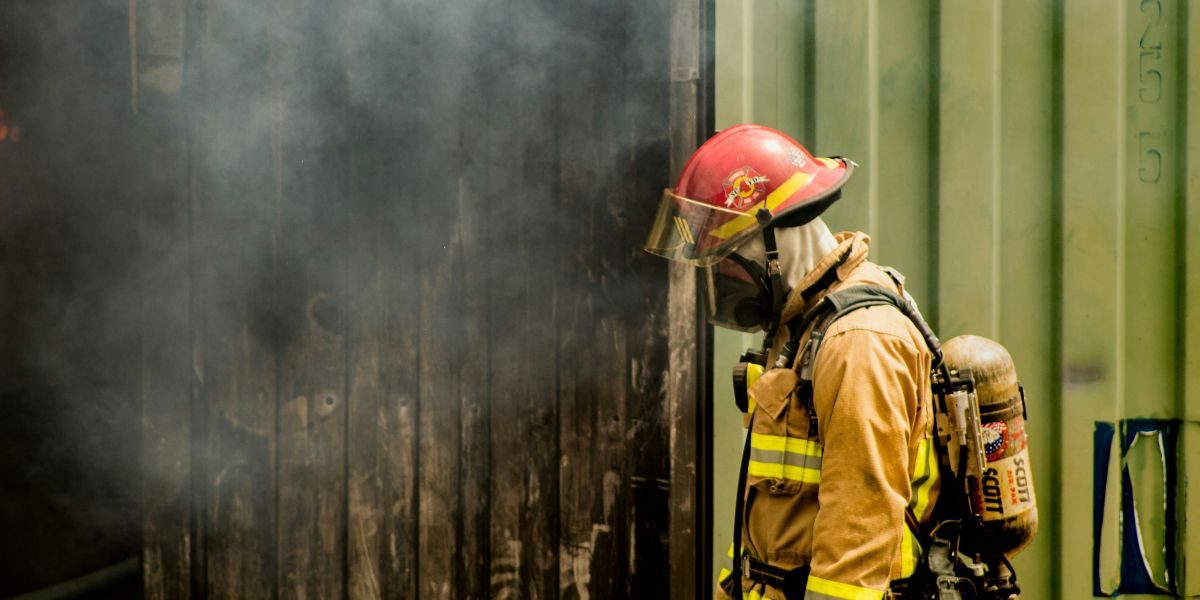Fire safety isn’t just about meeting legal requirements. It’s also about making sure buildings are prepared and people know what to do when things go wrong.
For commercial properties, the risk can be significant. Offices, warehouses, and shops all come with their own hazards. A small fire has the potential to escalate quickly if key safety measures aren’t in place.
That’s where building safety officers and health and safety leads step in. Their job isn’t limited to inspections. It involves planning, prevention, and ensuring that everyone on-site is prepared if a fire breaks out.
This guide explores the key areas every business could consider — from layout and equipment to training and legal duties. The aim is to offer practical advice without unnecessary jargon.
1. Understanding Your Legal Responsibilities
In the UK, fire safety law emphasizes that whoever controls a commercial premises is responsible for managing fire risk. This is the “Responsible Person.”
Depending on the business setup, this could be the employer, site manager, or building owner. In shared spaces, the duty might be shared across several people.
The core legislation is the Regulatory Reform (Fire Safety) Order 2005. It applies to all non-domestic premises and sets clear duties. These typically include:
- Completing a fire risk assessment
- Keeping escape routes and exits clear
- Maintaining alarms, lighting, and fire extinguishers
- Training staff and updating the plan regularly
Recent updates, including the Fire Safety Act 2021 and the Fire Safety (England) Regulations 2022, introduce additional duties for high-rise and multi-occupied buildings.
Failure to meet these responsibilities could lead to prosecution. But compliance isn’t just about avoiding penalties — it’s about reducing real-world risk.
2. Building Design and Passive Fire Protection Measures
The structure of a building can play a vital role in fire safety. Passive fire protection includes elements designed to slow the spread of fire and smoke to help ensure people have time to evacuate safely.
This includes fire-resistant walls, ceilings, floors, and doors. These elements should meet building regulations and be correctly installed and maintained.
Fire doors are especially important. When properly fitted and kept in good condition, they can help contain fire and protect evacuation routes. But if they’re propped open, poorly installed, or damaged, their effectiveness may be compromised.
That’s why many teams find value in completing a fire door installation course. It can provide staff or contractors with the knowledge to fit doors correctly and identify faults during routine checks.
3. Fire Detection, Alarm Systems, and Emergency Lighting
Early detection can save lives. Alarm systems should ideally be reliable, clearly audible, and suitable for the size and use of the building.
Common systems include smoke and heat detectors, manual call points, and central alarm panels. Larger buildings often use zoned systems, which can help identify the location of a fire quickly.
These systems need regular testing. Weekly fire alarm checks, periodic full-system tests, and accurate maintenance records are all important to remain compliant.
Emergency lighting is another key element. If a fire causes a power cut, lighting should guide people to exits and assembly points. It’s particularly important in corridors, stairwells, and windowless rooms.
Missed checks or poor lighting design might slow evacuation. That’s why regular walkthroughs are often recommended as part of your fire safety routine, along with professional servicing.
4. Safe Use of Fire Equipment and Signage
Firefighting equipment should ideally be ready for use at all times. Extinguishers, blankets, and hose reels are ideally clearly marked, regularly serviced, and easy to reach.
Staff should know where the equipment is located and understand what each type does. For example, water extinguishers are generally used for paper and wood, while CO₂ extinguishers are typically used for electrical fires. Using the wrong type could potentially make a fire worse.
Signage plays a supporting role. Exit signs should be visible from every area and lead to a safe route. Fire action notices are often placed at exits and detail procedures to follow.
The Health and Safety (Safety Signs and Signals) Regulations 1996 set out requirements for the design and placement of safety signs. This includes colour coding, visibility, and correct symbols.
Keeping exits clear is equally important. Items stored in stairwells or in front of doors might delay evacuation and increase the risk.
5. Raising Awareness Among Staff
A building might have excellent systems in place, but if staff aren’t sure what to do in an emergency, safety could be affected.
During a fire, panic and confusion are possible. People may hesitate, take the wrong route, or delay evacuation by collecting belongings. Training can help prevent this.
Fire Awareness Training is often considered one of the effective ways to build staff confidence. It can help people understand how fires start, what behaviour increases risk, and what to expect during an evacuation.
This training could be part of every new starter’s induction and refreshed regularly. It doesn’t need to be complicated — even short, focused sessions might help maintain awareness.
When everyone knows their role in an emergency, response times may improve, and injuries could be less likely. It also supports a culture where fire safety is taken seriously by all.
6. Regular Audits, Record-Keeping, and Updates
Fire safety isn’t something you set once and forget. It generally requires continuous effort and routine checks.
Risk assessments are usually reviewed at least annually. Sooner if the building changes, new hazards are introduced, or after an incident or near miss.
All checks, including alarm testing, emergency lighting inspections, and equipment servicing, are typically logged. These records can serve as proof of compliance and help track recurring issues.
Internal audits might be useful for identifying missed items or changes that affect fire safety. These could include broken signs, damaged fire doors, or changes to evacuation routes.
Walking the site regularly can help spot informal changes, such as temporary partitions, new furniture, or obstructed escape routes. These things might seem minor, but they could affect evacuation and should ideally be addressed promptly.
Consistent record-keeping can demonstrate that fire safety is actively managed, not just a response to inspections.
Wrapping Up
Fires move quickly. There’s rarely time to second-guess procedures or fix gaps during an emergency.
That’s why preparation is often considered so important. It means putting the right systems in place, training people properly, and checking regularly that everything continues to function as intended.
Commercial properties present a range of fire risks. But with a clear plan, regular maintenance, and confident staff, these risks can often be managed effectively.
The goal isn’t just to pass inspections or meet legal requirements. It’s to create a space where people feel safe and are better protected if something goes wrong.
With the right approach, fire safety can become part of everyday business. It’s not a box to tick. It’s an ongoing effort to keep people safe.
Published by Joseph T.


















